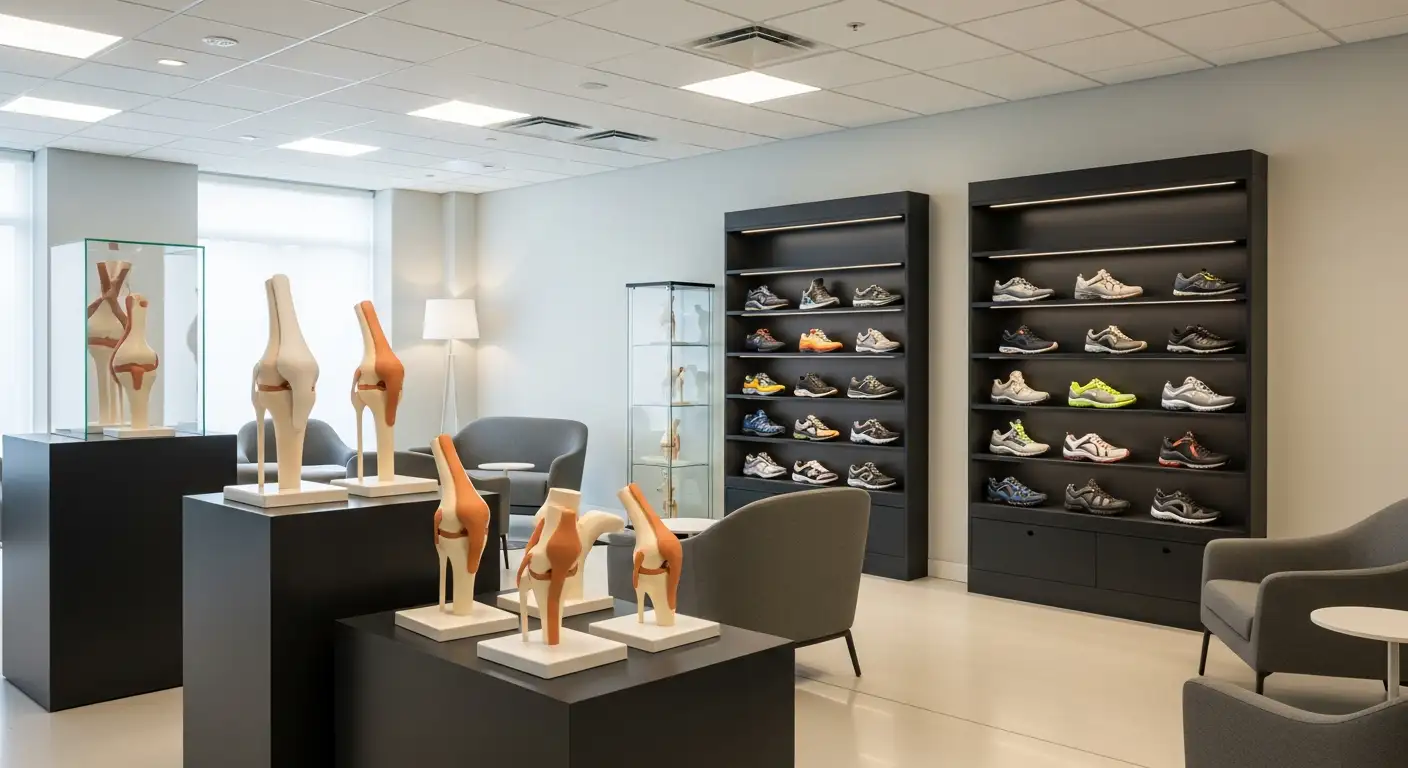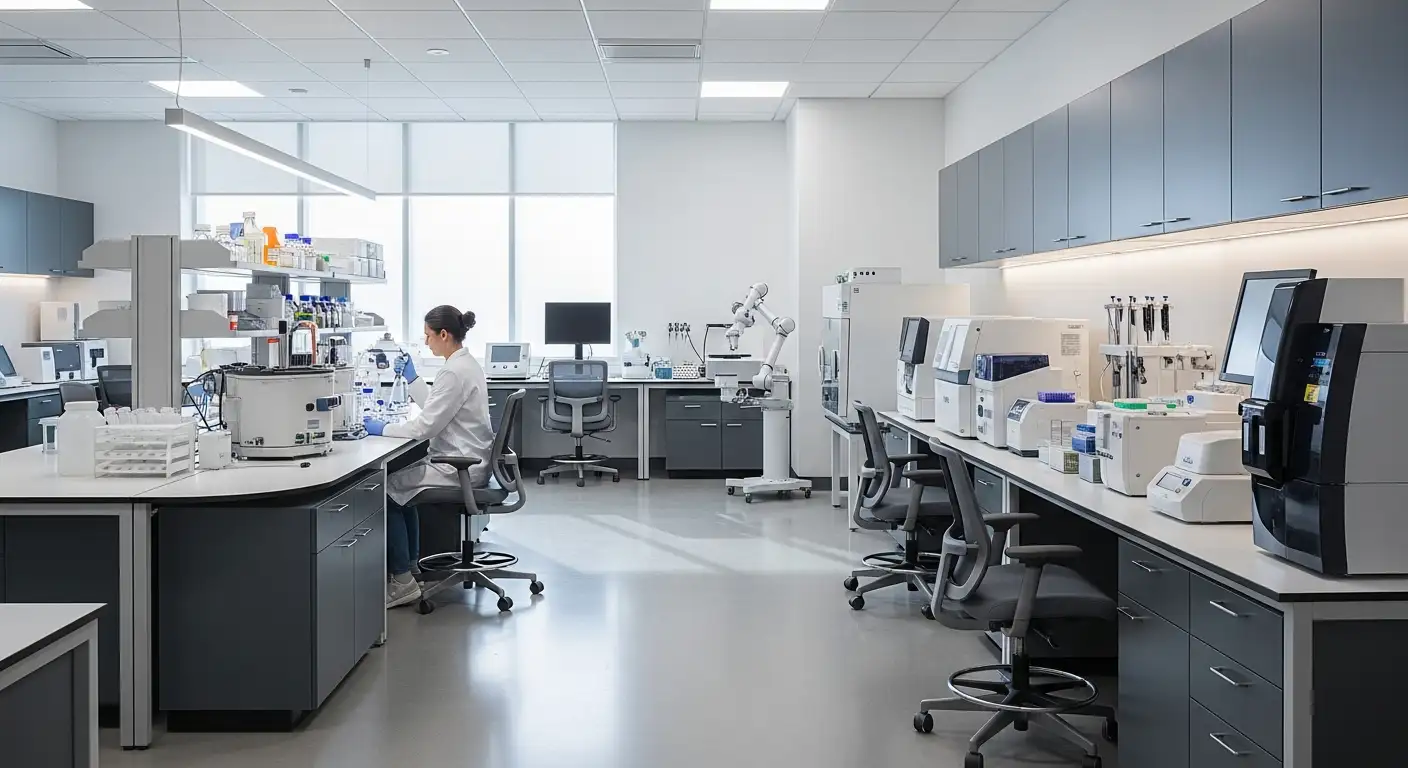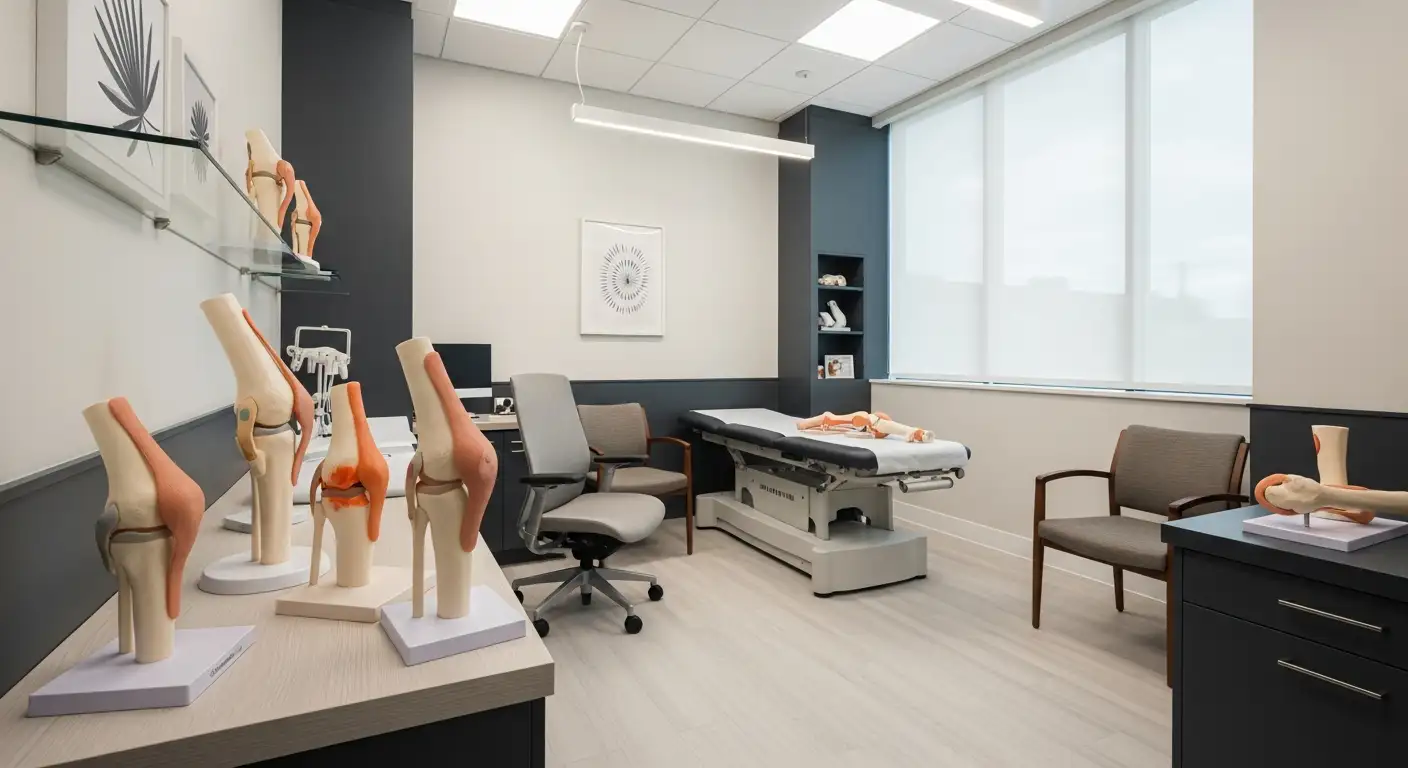Understanding and Managing Knee Pain in Active Women
Knee pain is a common concern among active women, often caused by injuries, overuse, or degenerative conditions such as osteoarthritis. With heightened awareness of the unique anatomical and hormonal factors affecting women, tailored strategies encompassing exercise, lifestyle, and medical intervention can help maintain knee health, prevent injuries, and promote effective recovery. This article explores the causes, symptoms, and comprehensive approaches to address knee pain, emphasizing exercises, treatment options, and preventative practices suited for active women.
Common Causes of Knee Pain in Women
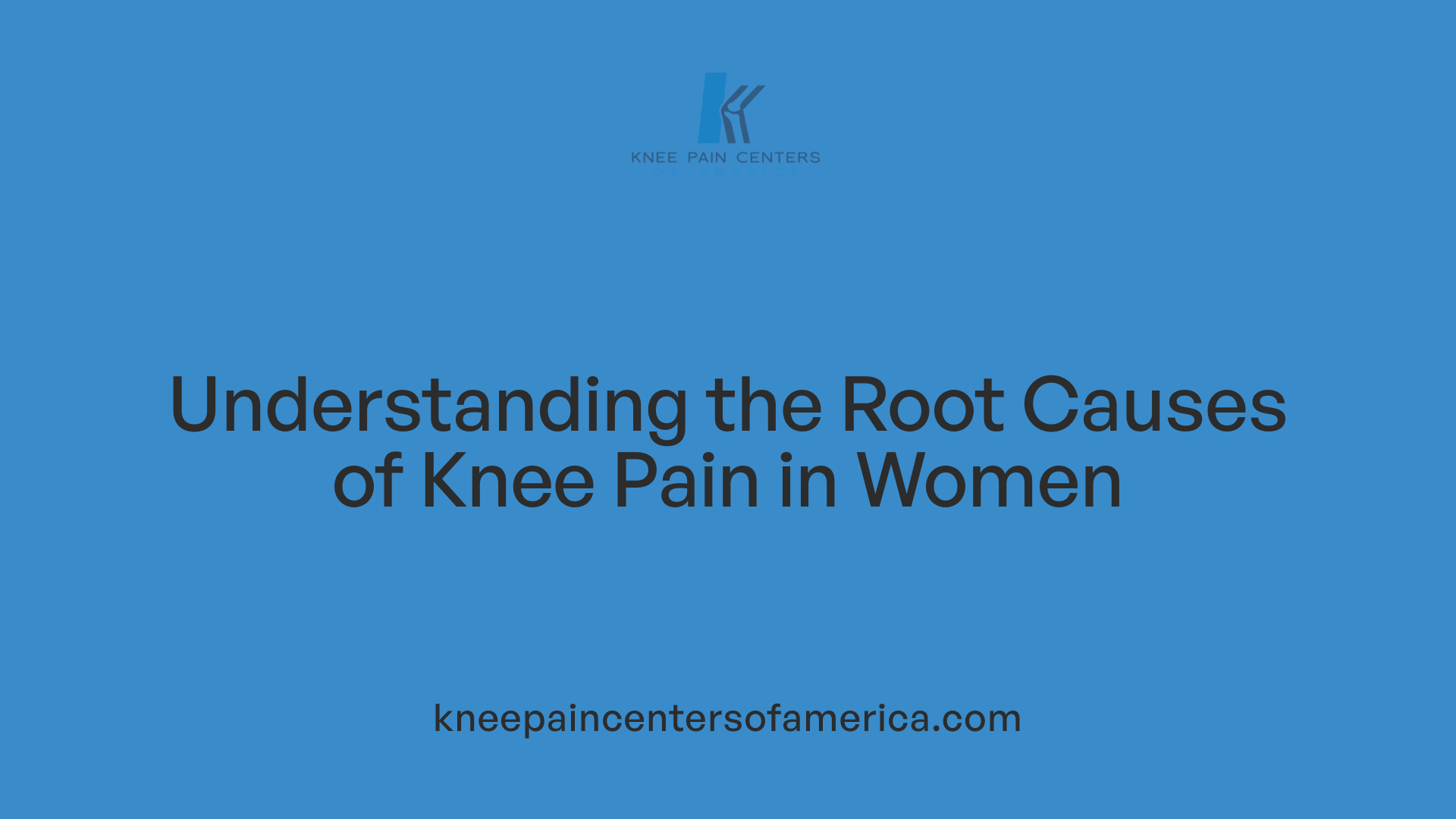
What are the common causes of knee pain in women?
Women experience knee pain from a variety of causes, often related to anatomical differences, activity levels, and joint health. Injuries are a prominent factor, with ligament tears such as anterior cruciate ligament (ACL) and medial collateral ligament (MCL) injuries being common, especially during sports that involve pivoting, jumping, or rapid direction changes.
Meniscal tears, caused by twisting or overuse, can lead to irritation, swelling, and locking of the knee joint. Fractures and dislocations are more serious injuries resulting from trauma, requiring immediate medical attention.
Degenerative conditions like osteoarthritis and rheumatoid arthritis are prevalent, especially in older women, leading to persistent pain, stiffness, and swelling. Osteoarthritis involves cartilage breakdown, worsening with age and prior joint injuries.
Overuse injuries are also frequent, including tendinitis and bursitis, which develop from repetitive motions and can cause inflammation and pain. Patellofemoral pain syndrome, often termed 'runner’s knee,' causes a dull ache at the front of the knee and worsens with activities like climbing stairs or squatting.
Mechanical issues such as iliotibial band syndrome and loose joint bodies within the knee joint can disrupt normal movement and cause discomfort. Excess weight adds stress on the knee joints, accelerating wear and tear, especially in conjunction with previous injuries.
Certain sports and occupational activities that involve frequent kneeling, squatting, or impact can increase the risk of damage or overuse injuries. Women’s wider hips and greater Q angle (the angle between the pelvis and the femur) can also contribute to abnormal stresses on the knees, leading to issues like patellofemoral pain.
Proper diagnosis involves physical examination and imaging tests like X-rays or MRI to identify the specific cause. Treatment options range from conservative measures, including physiotherapy and weight management, to surgical interventions when necessary, aiming to restore joint function and alleviate pain.
Exercises and Stretches to Alleviate Knee Pain
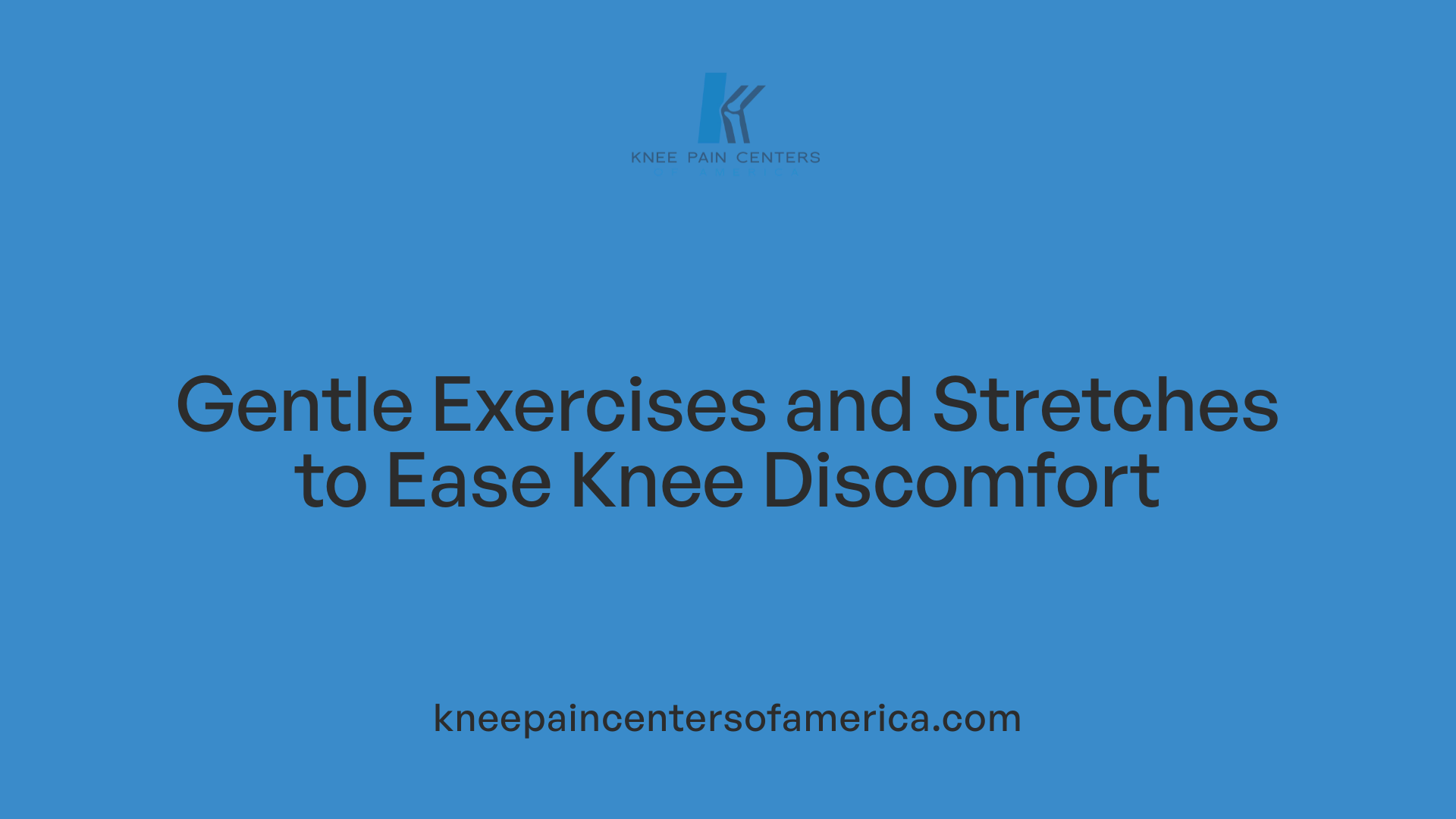
What exercises and stretches can help alleviate knee pain in active women?
Knee pain is a common issue, especially among active women, but many exercises can help reduce discomfort and improve joint stability. Incorporating gentle stretching and targeted strengthening exercises is essential.
A good starting point includes stretches for the calf, hamstrings, quadriceps, and hip flexors. These muscles support the knee and, when flexible, reduce tension and pressure on the joint. Each stretch should be held for 20-30 seconds and repeated throughout the day as needed. Regularly performing these stretches can significantly enhance flexibility, improve range of motion, and alleviate pain.
Some effective stretches include:
- Calf stretch
- Hamstring stretch
- Quadriceps stretch
- Hip flexor stretch
Alongside stretching, strengthening exercises are crucial for maintaining knee stability. Some recommended exercises are:
- Half squats (avoiding deep bends)
- Calf raises
- Leg lifts (front, side, and back)
- Bridges
- Side steps with resistance bands
Water-based activities such as swimming, water aerobics, and cycling are excellent low-impact options that promote joint health without overloading the knees. These activities help improve muscle strength and flexibility, contributing to pain relief.
Before starting any exercise routine, always warm up with light activity like walking or cycling for 5-10 minutes. It’s important to begin gradually and avoid activity that causes increased pain.
If knee pain persists or worsens despite these exercises, consulting a healthcare professional is advised to tailor a suitable treatment plan and prevent further injury.
Treatment Options for Knee Injuries and Pain
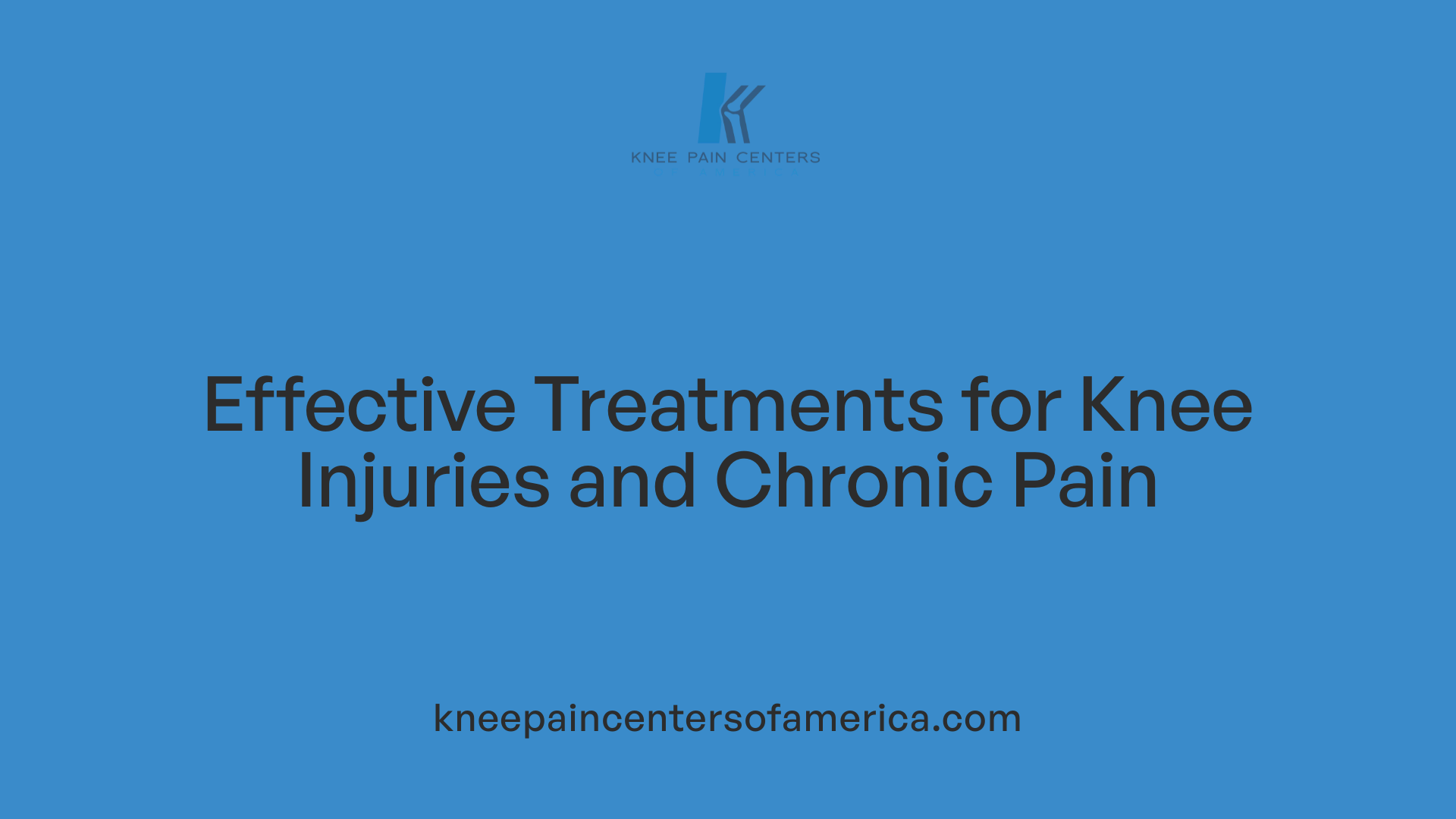
What are effective treatment options for knee injuries and pain in women?
Managing knee injuries and chronic pain in women involves a variety of strategies tailored to the specific condition and severity. Immediately after injury or during flare-ups, self-care measures are essential.
One of the most widely recommended approaches is the RICE method, which stands for Rest, Ice, Compression, and Elevation. Rest helps prevent further damage, while applying ice reduces swelling and pain. Compression from a brace or bandage supports the joint, and elevating the leg above heart level helps drain excess fluid.
In addition to self-care, consulting with healthcare professionals is crucial for accurate diagnosis and appropriate treatment planning. Physical therapy is often a cornerstone of treatment, focusing on strengthening the muscles that support the knee — especially the quadriceps, hamstrings, and hip muscles — to improve stability and reduce strain.
Supportive devices, such as knee braces or orthotic insoles, are recommended to offload affected areas and correct alignment issues. Medications like non-steroidal anti-inflammatory drugs (NSAIDs), acetaminophen, or topical analgesics can provide relief from pain and inflammation.
For persistent or severe cases, injections may be considered. Corticosteroid injections help decrease inflammation temporarily. Hyaluronic acid injections aim to lubricate the joint, especially in osteoarthritis. Platelet-rich plasma (PRP) injections are a newer option that may promote healing through concentrated growth factors.
If conservative measures fail, surgical options may be necessary. Arthroscopic procedures are minimally invasive and can repair or remove damaged tissue. In cases of advanced joint degeneration, partial or total knee replacement surgeries are options to restore function and relieve pain.
Preventative measures, like proper exercise programs, weight management, support footwear, and activity modification, can help women avoid aggravating their knee conditions.
In summary, effective treatment involves a combination of self-care, medical intervention, and lifestyle modifications, all tailored to the individual’s needs. Early consultation with healthcare providers ensures an accurate diagnosis and a comprehensive treatment approach, improving outcomes and quality of life for women suffering from knee pain.
Lifestyle and Dietary Strategies for Healthy Knees
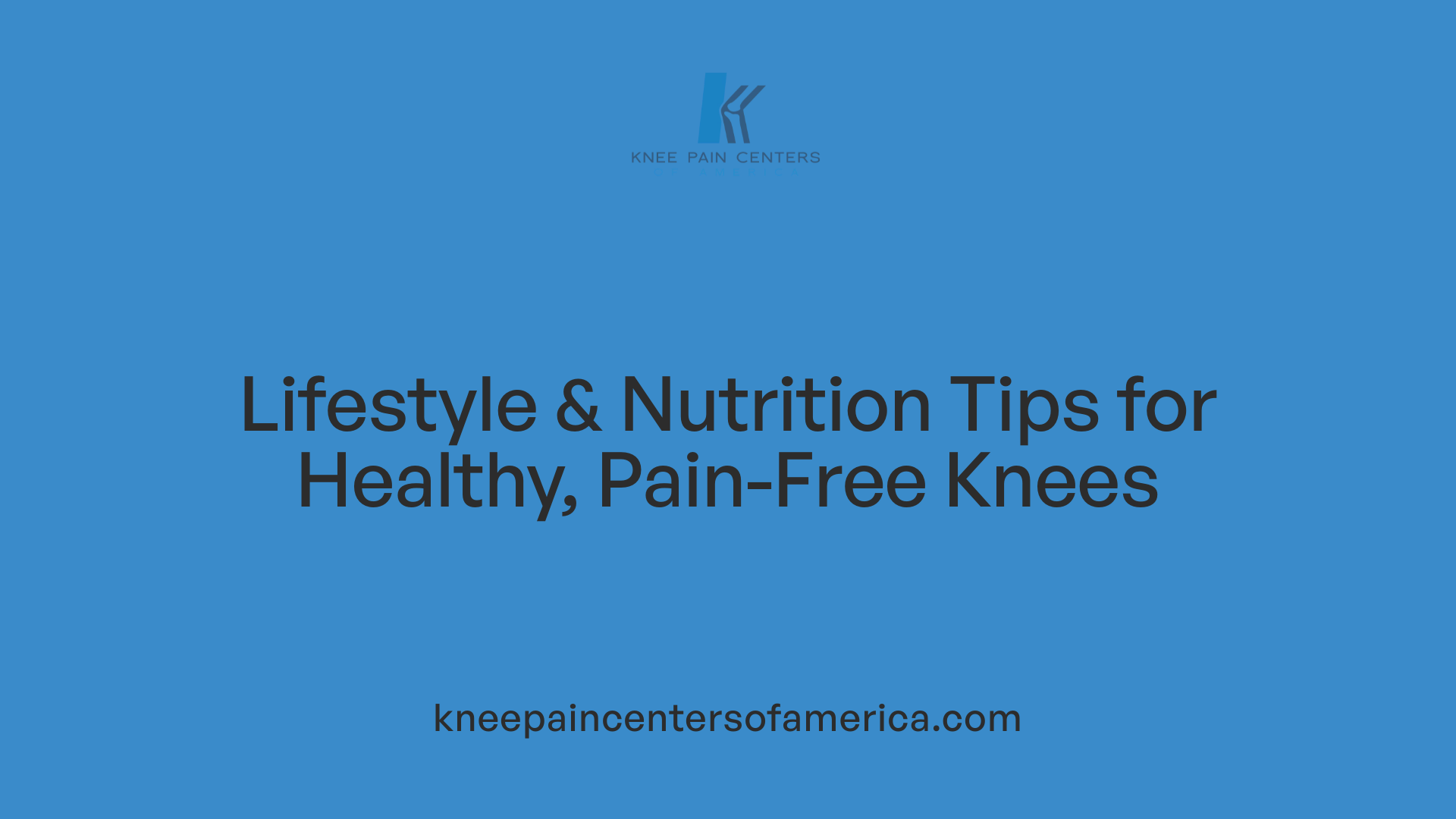
What lifestyle and dietary strategies can promote healthy knees in active women?
Maintaining a healthy weight is fundamental in reducing excessive stress on the knee joints, especially for women actively engaging in sports or daily activities. Even small weight reductions—around 10 pounds—can significantly decrease knee pain and slow down degenerative processes in the cartilage.
A balanced diet rich in anti-inflammatory foods can bolster joint health. Incorporating omega-3 fatty acids found in fish like tuna, mackerel, and halibut helps reduce joint inflammation and pain. Additionally, consuming plenty of berries, leafy greens, ginger, and garlic offers natural anti-inflammatory benefits.
Hydration is another cornerstone of joint health. Drinking sufficient water keeps the joint cartilage hydrated and functioning optimally.
Dietary supplements like vitamin D and calcium support bone strength, reducing the risk of osteoporosis-related knee issues. Glucosamine and chondroitin supplements are popular for their potential to preserve cartilage integrity, although scientific evidence varies.
Engaging in regular low-impact exercises such as swimming, water aerobics, cycling on a stationary bike, and yoga helps strengthen muscles supporting the knees, including the quadriceps and hamstrings. These exercises improve joint stability, flexibility, and muscular balance, which are crucial for preventing injuries.
Wearing supportive, well-fitting footwear minimizes abnormal stresses and improves alignment during daily activities and exercise. Proper warm-up routines, including stretching of the quadriceps, hamstrings, calf, and IT band, prepare the muscles and joints for activity, reducing injury risk.
In addition to physical measures, prompt medical consultation for persistent or worsening knee pain is important. Early evaluation can prevent further damage and may include physical therapy or targeted treatment.
Some women consider supplementation with collagen, which may contribute to maintaining the integrity of cartilage and connective tissues. A healthy diet emphasizing vegetables, fruits, and whole grains supports overall joint health, reducing systemic inflammation.
Lifestyle habits such as avoiding smoking and limiting processed foods help lower inflammation levels. Incorporating stress-reducing practices like meditation or mindfulness can also positively influence joint health.
In summary, combining weight management, nutritious eating, regular low-impact exercise, supportive footwear, and early medical intervention forms a comprehensive approach to preserving and enhancing knee health in active women.
When to Seek Medical Attention for Knee Pain
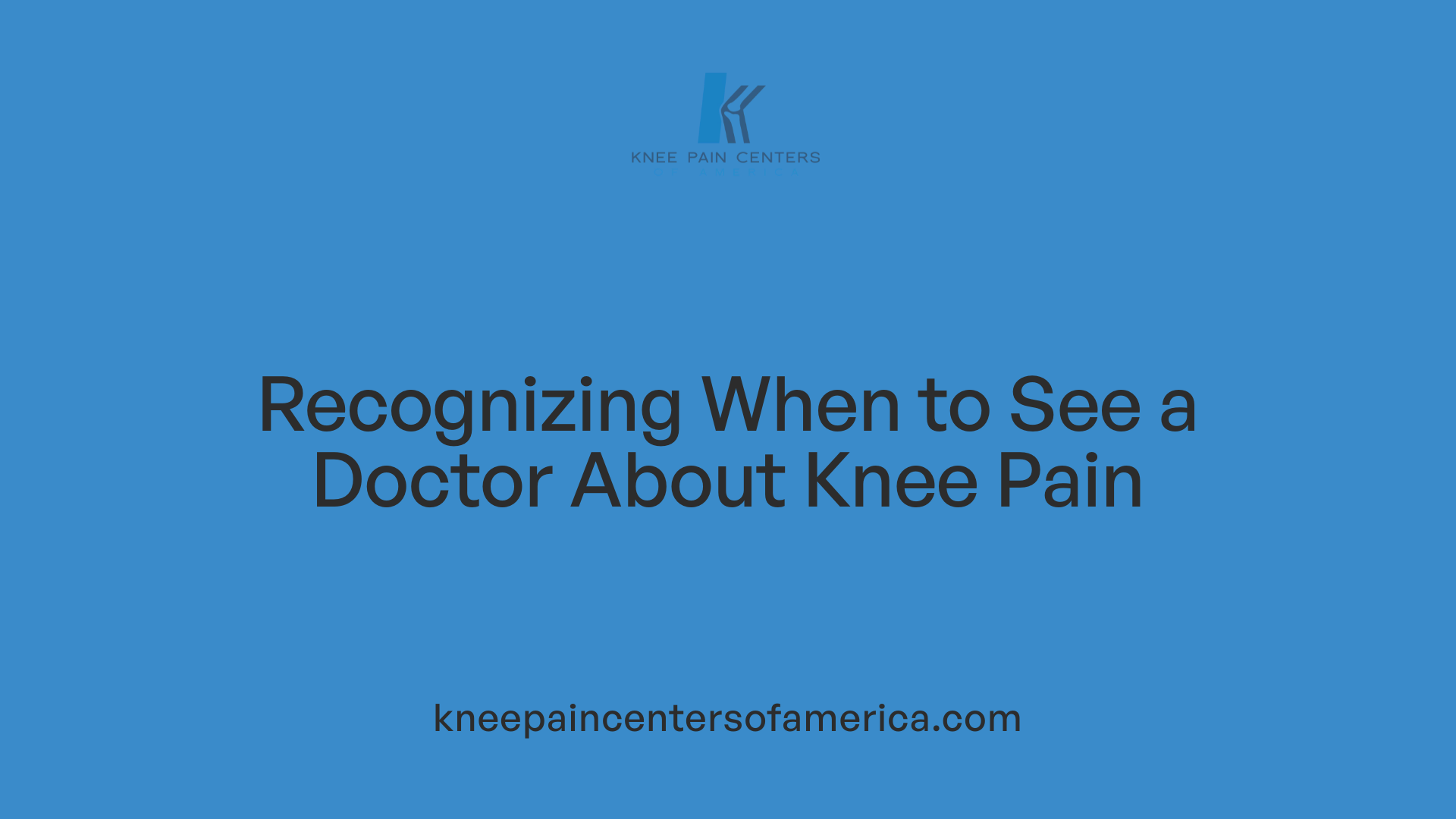
Signs of serious injury or worsening symptoms
Knee pain can sometimes indicate a significant injury or underlying health condition that requires medical assessment. Recognizing when to see a healthcare professional is important to prevent further damage and to start appropriate treatment.
Persistent pain that lasts more than three days, increases in intensity, or is associated with swelling, redness, warmth, or tenderness indicates that medical evaluation is necessary. These symptoms could signal inflammation, infection, or an acute injury such as a ligament tear or meniscal damage.
Immediate medical attention should be sought if there is sudden swelling, severe pain, or a popping sound during injury. These signs often point to ligament tears like ACL or MCL injuries, or fracture. An inability to bear weight, deformity of the knee, or inability to move the joint are also urgent signs that require emergency care.
If the injury results from a forceful impact—such as a fall, hit, or collision—and is accompanied by intense pain or deformity, it is critical to see a healthcare professional promptly.
Even if the pain is mild or infrequent, it’s advisable to discuss these symptoms during routine medical visits. However, when symptoms persist, worsen, or interfere with daily activities, prompt evaluation is essential.
Persistent or worsening knee symptoms, especially in cases of known conditions like osteoarthritis or gout, should not be ignored. These may indicate disease progression or complication, such as increased inflammation or joint deterioration.
In summary, seek immediate medical care if:
- Sudden swelling and severe pain occur after an injury
- There is an inability to move or bear weight on the knee
- The knee appears deformed
- The pain and swelling worsen rapidly
- You experience a locking or catching sensation in the joint
- Symptoms do not improve with simple at-home measures after a few days
Prompt medical diagnosis and treatment can help prevent long-term damage, guide rehabilitation, and improve outcomes for knee pain. Do not delay seeking care if you have any of these worrying signs.
Preventative Strategies for Knee Injury and Maintenance
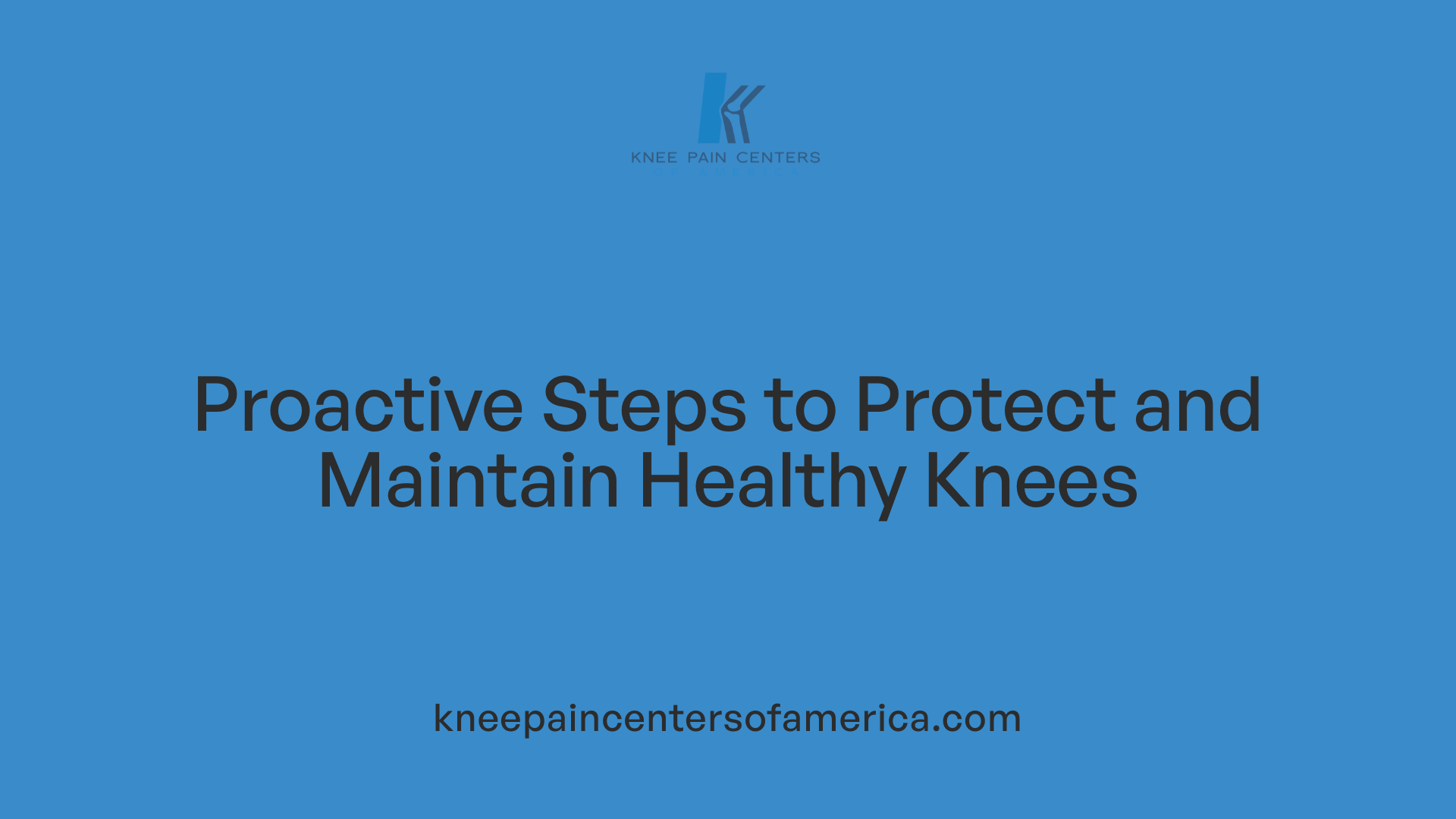
How can active women prevent knee injuries and maintain knee health?
Women who lead active lifestyles can take several proactive steps to help prevent knee injuries and promote overall joint health. A foundational approach involves strengthening the muscles that support the knee, particularly the quadriceps, hamstrings, gluteal muscles, and hip stabilizers. Engaging in targeted exercises such as squats, bridges, leg lifts, and side leg raises can enhance muscle support around the knee, reducing strain during daily activities and sports.
In addition to strength training, neuromuscular exercises play a vital role. These include balance drills, agility, and proper jump-landing techniques, which improve coordination and joint proprioception. Such training is especially beneficial for reducing the risk of anterior cruciate ligament (ACL) injuries, common in women during pivoting or jumping movements.
A thorough warm-up routine before exercise prepares muscles and joints, decreasing injury risk. Dynamic stretches and light aerobic activity like brisk walking or cycling for 5-10 minutes can stimulate circulation and flexibility. Regular stretching of hamstrings, calves, and IT band also helps maintain flexibility, preventing tightness that can contribute to pain.
Wearing supportive footwear that fits well and provides adequate cushioning is crucial. Proper shoes help absorb shock and align the foot and leg, decreasing stress transmitted to the knee. Replacing worn shoes regularly ensures continued support.
Maintaining a healthy weight is another essential strategy. Even small weight reductions can significantly decrease stress on the knees, lowering injury risk and alleviating symptoms in those with existing joint degeneration.
Cross-training and avoiding repetitive high-impact activities, such as running or jumping without appropriate conditioning, help prevent overuse injuries. Swimming, water aerobics, cycling, and elliptical training are excellent low-impact options that strengthen muscles without undue joint strain.
Hormonal fluctuations, particularly in women around menopause, can affect ligament laxity and joint stability. Women should consider consulting professionals for tailored injury prevention strategies, especially during hormonal changes.
Lastly, being attentive to body signals is important. Experiencing pain or discomfort should prompt activity modification or rest, and if symptoms persist, seeking guidance from healthcare providers can prevent minor issues from worsening.
In sum, combining muscle strengthening, neuromuscular training, proper warm-up, supportive footwear, weight management, and mindful activity choices provides a comprehensive approach to protecting knee health in active women.
Impact of Anatomy and Hormonal Factors on Knee Pain in Women
How do wider hips and Q angle contribute to knee pain in women?
Women generally have wider hips compared to men, which increases the Q angle—the angle between the quadriceps muscles and the kneecap (patella). A larger Q angle means that the pull of the quadriceps muscles directs the kneecap to drift laterally, placing added stress on the knee joint.
This anatomical difference can lead to conditions like patellofemoral pain syndrome, as the misalignment causes abnormal tracking of the kneecap during movement. Over time, this increased stress can cause pain, inflammation, and even structural wear in the knee.
Why do women rely more heavily on quadriceps muscles?
Due to their wider pelvises and specific muscle balance, women tend to depend more on their quadriceps muscles for stabilization during activities. This reliance can sometimes overstrain the muscles and the structures they support, particularly if the surrounding muscles like the hamstrings and glutes are weaker.
Imbalance in muscle strength and coordination can further increase the stress on the kneecap and other joints, making women more prone to injuries such as patellofemoral pain, meniscal tears, and ligament injuries.
How do hormonal fluctuations influence ligament laxity and knee stability?
Hormonal changes, especially fluctuations in estrogen levels, significantly impact ligament laxity—the looseness of ligaments—which directly affects knee stability.
During menstrual cycles, estrogen peaks can lead to increased ligament laxity, making ligaments more flexible and potentially less supportive. This heightened laxity can raise the risk of ligament injuries such as ACL tears, particularly during activities involving pivoting or jumping.
Physiological changes during menopause also lower estrogen levels, leading to decreased ligament elasticity and weaker connective tissues. This contributes to an increased likelihood of joint degeneration, arthritis, and associated knee pain.
Additional anatomical and hormonal influences
| Factor | Impact on Knee Pain | Explanation |
|---|---|---|
| Wider hips | Increased Q angle | Causes lateral tracking of the kneecap, leading to pain |
| Dependence on quadriceps | Muscular imbalance and joint stress | Overreliance can strain knee structures |
| Fluctuating estrogen levels | Ligament laxity and joint support | Affects knee stability, risking injury and degeneration |
| Menopause-related bone loss | Osteoarthritis risk | Reduces bone density, increasing joint wear and pain |
Strategies to address knee pain related to anatomy and hormones
Women experiencing increased knee pain due to these factors can benefit from targeted physical therapy focusing on strengthening the gluteal and hamstring muscles, which help balance the muscular forces acting on the knee.
Stretching exercises that improve flexibility in the IT band and surrounding tissues can also aid in correcting patellar tracking issues.
Understanding hormonal cycles and their effects is crucial; some women may need to modify intense physical activities during periods of heightened ligament laxity.
Maintaining a healthy weight, engaging in low-impact exercises such as swimming and cycling, and consulting healthcare providers for personalized management plans are essential measures.
By addressing both the structural and hormonal contributors to knee pain, women can improve joint stability, reduce discomfort, and prevent long-term damage.
Research into the complex relationship between anatomy, hormones, and knee health continues to evolve. For more detailed insights, searching "knee pain in women anatomy and hormones" can offer current studies and tailored management strategies.
Rehabilitation and Long-term Knee Care
How can strengthening core, glutes, and hamstring muscles improve knee health?
Building strong muscles around the knee, particularly the core, glutes, and hamstrings, plays a vital role in maintaining knee stability and reducing pain. These muscles support proper joint alignment, absorbing shock during movement, and alleviating undue stress on the knee joint.
Exercises such as planks, side planks, and bridges enhance core and glute strength, while hamstring curls and leg presses focus on the hamstring muscles. Incorporating these into regular routines can prevent injury and improve mobility.
Why is proper activity modification essential during recovery?
During rehabilitation, modifying activities to reduce strain on the knee aids healing and prevents further injury. For example, replacing high-impact exercises like running and jumping with low-impact alternatives such as swimming, water aerobics, or cycling minimizes joint stress.
Resting from activities that exacerbate symptoms allows inflamed tissues to recover. Applying the RICE method—rest, ice, compression, and elevation—is recommended to manage swelling and pain.
Gradually reintroducing activity, with guidance from healthcare professionals, ensures safe recovery and prevents setbacks.
How do we address overuse and degenerative issues in long-term knee care?
Chronic overuse and degenerative conditions, like osteoarthritis, require a comprehensive management approach. Regular strengthening exercises improve muscle support, while stretching flexible muscles like the hamstrings, calves, and quadriceps can ease joint tension.
Maintaining a healthy weight is crucial, as excess weight increases load and accelerates cartilage degeneration. Even small weight reductions can significantly decrease knee stress.
Support devices such as orthotics, braces, or wedges can offload affected areas, providing relief and stability.
Incorporating lifestyle habits like avoiding prolonged sitting, practicing good posture, and choosing supportive footwear helps prevent long-term issues.
Emerging treatments, like platelet-rich plasma (PRP) injections, aim to reduce inflammation, although they do not reverse degenerative changes. Ongoing research continues to explore new therapies for protecting and restoring joint health.
What long-term strategies are advised for women concerning knee health?
Women face specific challenges related to knee health due to anatomical differences, hormonal fluctuations, and higher susceptibility to certain injuries. To support long-term knee wellness, women should focus on maintaining strength in supporting muscles, controlling body weight, and engaging in balanced exercises.
Preventive measures include proper warm-up routines, protective gear during sports, and attention to signs of discomfort. Regular check-ups with healthcare providers can detect early signs of degeneration or imbalance.
Dietary intake rich in calcium, vitamin D, omega-3 fatty acids, and anti-inflammatory foods supports joint integrity and reduces inflammation.
Lifestyle modifications, such as avoiding high-impact activities during hormonal fluctuations like menopause, further help in managing knee health.
How do these strategies integrate into a holistic approach for knee care?
Combining muscle strengthening, activity modification, weight management, and lifestyle changes provides a robust framework for long-term knee health. Consistency is critical; integrating these practices into daily routines enhances joint stability and reduces the risk of future injuries.
Educational resources and professional guidance ensure exercises and modifications are performed correctly, maximizing benefits and minimizing harm.
By adopting these strategies, individuals—especially women—can maintain mobility, reduce pain, and improve quality of life well into later years.
Ensuring Long-term Knee Health Through Proactive Practices
Maintaining knee health in active women requires a comprehensive approach that includes targeted exercises, lifestyle modifications, prompt medical attention when necessary, and ongoing preventive strategies. Understanding the unique anatomical and hormonal factors influencing women’s knees empowers women to adopt habits that minimize injury risk and promote joint longevity. With consistent effort and appropriate care, active women can continue to enjoy their activities while safeguarding their knees for the future.
References
- Take control of your knee pain - Harvard Health
- Knee Injuries in Women: Tips for Prevention and Healing
- 11 Knee Pain Dos and Don'ts - WebMD
- Knee Health: Tips to Reduce Pain | Mass General Brigham
- Knee pain - Diagnosis and treatment - Mayo Clinic
- 10 Tips for Healthy Knees and Strong Joints as You Age
- Tips for Working Out When You Have a Knee Injury
